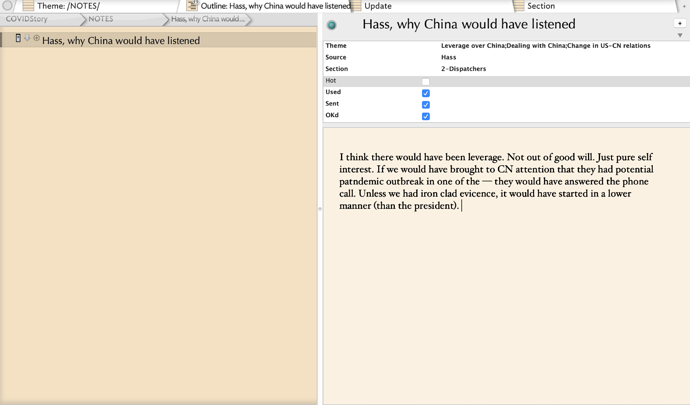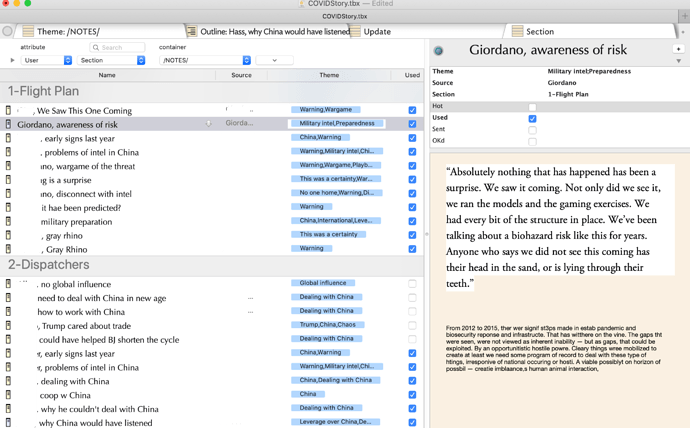Here is a real-world illustration of how I have used TB, straight off having relied on it in my work.
The main reference thread I’ll suggest to you is one on “How to Use the Attribute Browser,” here: http://forum.eastgate.com/t/how-to-use-the-attribute-browser/394
Here are some orientation points:
- I am a book and magazine writer, and I use TB to array notes when I’m finally putting together an article or book draft.
- The Attribute Browser is my go-to tool in this stage of TB work. The reason is that it lets you see your material, grouped according to whatever categories or tags you have created.
- When I am doing an article, I typically go through my research info and create a TB note for every point, theme, quote, or fact I might want to use in the article. Then I categorize each note in a number of ways: the source it came from; the themes it touches on; the section(s) of the article where I might use it; whether I have already used it (so I won’t repeat it); whether I have sent it out for checking; and whether it’s been OK’d after fact checking.
Here is a sample note of a quote I actually used in an Atlantic article this past week How the White House Coronavirus Response Went Wrong - The Atlantic
That’s just to show you what one note looks like, with its various fields. The details are explained in the thread linked earlier.
Then, when I write, I work from a view like the one below. I have blanked out all of the “Source” fields except the ones I actually used in the article, because many of these were confidential. The story I was doing was organized in time-line style sections, an Intro and then Sections 1 through 5. Here is how it looked when I was writing from it. (Again, with one note that I actually used in the piece shown, and the rest having all Source info blanked out. Since many of the note titles began with the source’s name, I have blanked that out too.)
I have similar attribute browser views showing the notes grouped by source; or by Theme; or by whether I have used them; and by whether they have been checked; etc.
Everyone uses this software in a different way. This is an illustration of how I have found it powerful, flexible, and endlessly configurable for the idea-organizing tasks that I rely on as a writer. Your specific needs are probably different, but this might give you an idea of what is possible.

